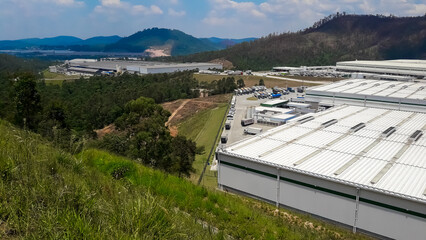3D printing, a revolutionary technology that has permeated various sectors, is now making its mark in the construction and environmental fields. As we grapple with the escalating issues of climate change and the need for innovative solutions, the concept of 3D printed white roofs has emerged. This groundbreaking idea combines the precision and cost-effectiveness of 3D printing with the energy-saving potential of white roofs.
The Science Behind White Roofs
The color white is known for its ability to reflect sunlight, a property that can be harnessed to reduce energy consumption in buildings. By reflecting the sun’s rays instead of absorbing them, white roof white house can significantly lower the amount of heat absorbed by a house, thereby reducing the need for air conditioning. Several research studies have substantiated this theory about white roofs on houses , demonstrating the potential of white roofs to cut energy costs and contribute to a more sustainable planet.
The Role of 3D Printing in Creating White Roofs
3D printing, also known as additive manufacturing, creates objects by depositing materials layer by layer based on a digital model. This technology brings numerous benefits to roof construction, including precise control over the shape and size of the roof, reduced waste, and potentially lower costs. Some pioneering projects have already showcased the successful installation of 3D printed white roofs, offering promising insights into the feasibility of this approach.
The Environmental Impact
Cutting down energy consumption has a direct positive impact on our fight against climate change. Lower energy use translates to less burning of fossil fuels, which is the primary source of greenhouse gases contributing to global warming. By keeping houses cooler and reducing the demand for air conditioning, white roofs could play a significant role in mitigating the effects of climate change. The long-term environmental benefits of this innovative solution are, therefore, substantial.
The Economic Impact
From an economic perspective, the potential savings of painting roofs white from reduced energy costs are considerable. While the initial investment in 3D printed white roofs might be higher than traditional roofing methods, the long-term savings in energy costs could offset this. However, it’s essential to consider potential economic barriers, such as the availability and cost of 3D printing technology and materials. Further research and policy interventions might be needed to make this solution more accessible and affordable.
Conclusion
As we strive to combat climate change and cut energy costs, innovative solutions like 3D printed white roofs climate change offer a ray of hope. By harnessing the power of technology and understanding the science of reflection, we can turn our roofs into tools for environmental and economic sustainability. The call now is for further research and implementation of this promising solution, pushing us one step closer to a greener and more sustainable future.



